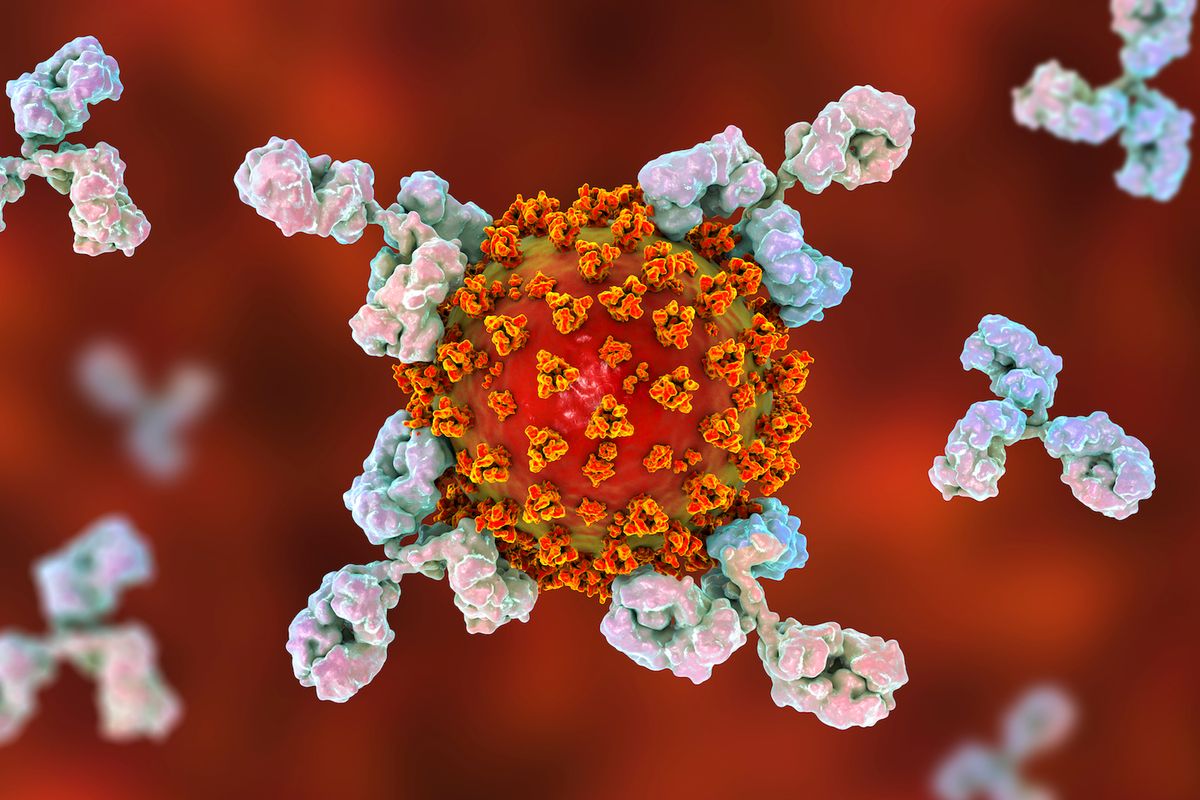
Researchers have been gathering important and new insights about the effects of COVID-19 in brain and body for more than 18 months. These findings raise concerns about the potential long-term effects of the coronavirus on biological processes, such as aging.
My past research as a cognitive neuroscientist has been focused on understanding how brain changes due to aging can affect people's ability think and move, especially in middle age. My research team began to explore how COVID-19 might affect natural aging as we saw more evidence that COVID-19 can cause brain and body damage for several months.
Observing the brain's reaction to COVID-19
A preliminary, but large-scale study that examined brain changes in COVID-19 patients was published in August 2021. It attracted a lot of attention from the neuroscience community.
Researchers used data from the UK Biobank to conduct the study. This database contains brain imaging data for over 45,000 individuals in the U.K., going back as far as 2014. This is crucial because there were baseline data and brain imaging for all those people who lived before the pandemic.
After analysing the brain imaging data, the research team brought back people who had been diagnosed as having COVID-19 to have additional brain scans. The researchers compared participants who had COVID-19 with those who hadn't. They carefully matched the groups based upon age, sex and study location as well as other risk factors such as socioeconomic status and health variables.
Researchers found significant differences in gray matter, which is composed of cells that make up the brain's information processing cells, between the COVID-19 infected and the uninfected. The COVID-19 patients had a reduced thickness of gray matter in brain regions called the frontal and temporal, which was different from the usual patterns in those who hadn't been infected.
It is common for gray matter thickness to change over time in the general population. However, the changes in COVID-19 infected patients showed greater than normal changes.
The results of the research showed that patients with severe COVID-19 were not separated from those with milder cases. This means that people infected by COVID-19 had brain volume loss even though the disease wasn't severe enough to warrant hospitalization.
Researchers also looked at cognitive performance and discovered that people with COVID-19 performed slower on information processing tasks than those without.
Although we need to be cautious in how these findings are interpreted as they await formal peer reviews, the large sample of pre- and post-illness data from the same people, and careful matching with people without COVID-19 make this preliminary work especially valuable.
What does this mean for brain volume?
The loss of taste and smell was a common complaint from COVID-19 infected people early in the pandemic.
Surprisingly, all the brain regions found to have been affected by COVID-19 were linked to the olfactory bulbs, a structure located near the front of brain that transmits signals about smells from the nose and other brain regions. There are connections between the olfactory bulbs and regions in the temporal lobe. Because the hippocampus is found in the temporal lobe, we often refer to it when discussing aging and Alzheimer’s disease. Given its role in cognitive and memory processes, the hippocampus will likely play a significant role in aging.
Research on Alzheimer's disease is important because some data suggests that people at high risk have a diminished sense of smell. It is too early to draw conclusions about the long-term effects of these COVID-19-related changes. However, it is worth investigating the possible links between COVID-19 brain changes and memory. This is especially important considering the importance of the regions involved in memory and Alzheimer’s disease.
Brain images of a 35-year old and an 85 year-old. The older person has gray matter that is thinner, so the orange arrows are indicated. The green arrows indicate areas that have more cerebrospinal fluid (CSF), due to a reduced brain volume. Purple circles indicate brain ventricles that are filled with CSF. These fluid-filled areas tend to be larger in older adults. (Image credit: Jessica Bernard, CC BY-4.0
Looking ahead
These findings raise important questions that remain unanswered. Is the brain able to recover from viral infection over time?
These are open and active areas of research that we are starting to do in our laboratory, in addition to our ongoing work on brain aging.
Our research shows that the brain processes and thinks differently as we age. We have also observed changes in the way people move over time and how they learn new motor skills. Over a century of research has shown that older adults have difficulty processing and manipulating information, such as updating a mental grocery checklist. However, they still retain their vocabulary and knowledge. We know that older adults learn motor skills but more slowly than young adults.
Adults over 65 experience a decline in brain size. This decline is not limited to one region. There are differences across the brain. Due to the loss in brain tissue, there is often an increase of cerebrospinal liquid that fills spaces. White matter is also less intact in older people, as the insulation on the long cables of axons that transmit electrical impulses between nerve cell cells is less intact.
In the last decade, life expectancy has increased and more people are getting older. Although everyone wants to live long, healthy lives, it is not possible for everyone to age without any disability or disease. However, the older years can bring about changes in our thinking and movement.
Understanding how these pieces fit together will allow us to unravel the mysteries surrounding aging and help people with aging improve their quality of life. It will also help us to understand how the brain might recover from illness in the context COVID-19.
Get the best of The Conversation every weekend. Subscribe to our weekly newsletter.
This article was first published by The Conversation. This article was contributed by the publication to Live Science's Expert voices: Op-Ed and Insights.
